21 May Our favourite spots in the south of Spain and the balearics
We’ve spent a total of 8 months in Spain and the Balearic Islands. So by now, I’d say that we’ve earned the right to make a list of our favourite spots!
The list is utterly subjective, though thoroughly experienced and heartfelt. Keep in mind that we’re sailors though, so our favourites might not be any tourist’s favourites, but we hope to inspire. Here are our favourite spots in the south of Spain and the Balearics!
Our favourites are not in a prioritised order; they are simply geographically from west to east.
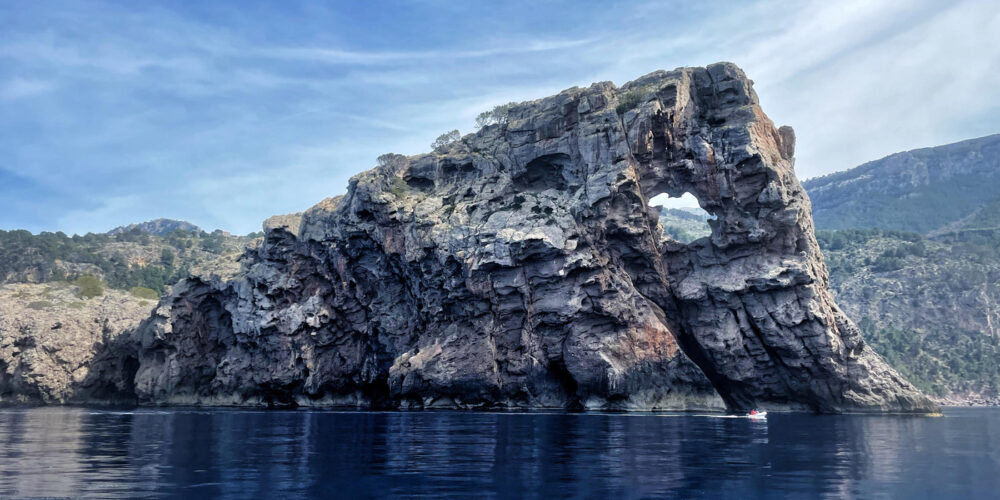
Mainland Spain
Punta de la Mona
Rounding the cape of Punta de la Mona was the first time we really experienced the crystal clear water that fills this part of the Mediterranean. Anchored right in front of the entrance to the Marina del Este, we jumped in our diving gear and went under water. There are several diving spots around the area. The marina is a small, very protected little harbour, and if you climb the hairpin bending stairway right next to the marina over the hill, you’ll be able to enjoy paragliders en masse jumping off over the town of La Herradura; it’s a virtual hotspot for paragliding.
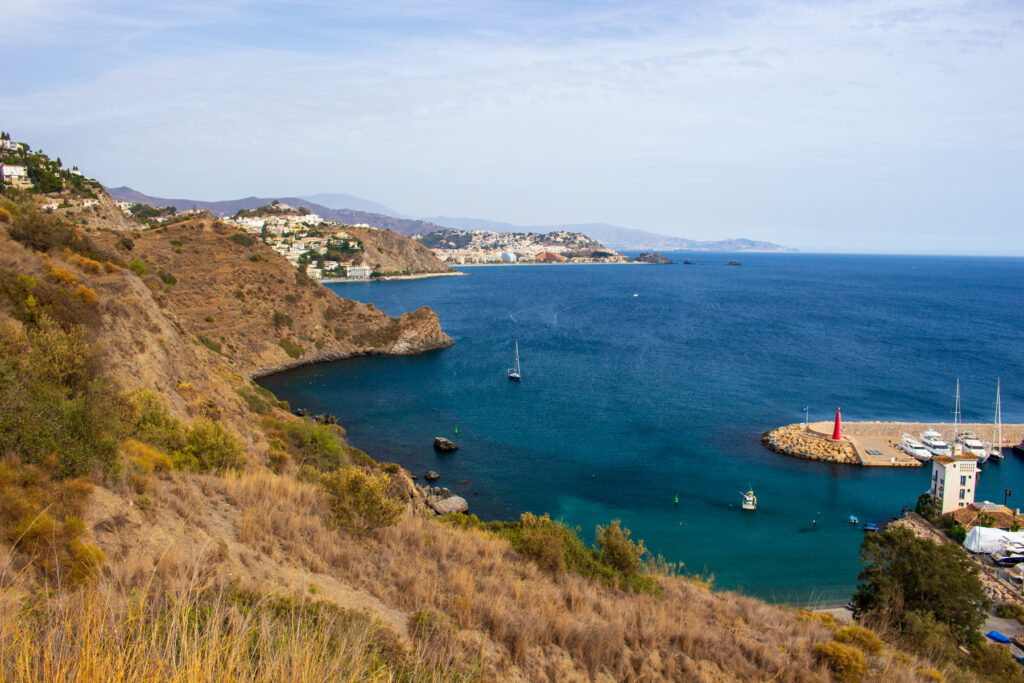
Cala de San Pedro
This bay was something else. Tucked in between white cliffs of costa blanca, we found a small hippie-ish community living on the beach and in small cabins around it. They had a huge loudspeaker setup, so as we dropped the anchor, we were accompanied by 90’s reggae tunes. The vibe here is not easy to explain; you’ll have to experience it yourself.
La Azohía
Before coming to Cartagena, we spent two nights in this lovely bay. The anchorage is well-protected and you can anchor quite close to the beach. The town itself is very down-to-earth, home to a lot of diving activities, and close to quite a few hiking routes. It seemed to also be a center for mobile homes and bouldering. We rowed in and onto the beach, where we enjoyed huge GT’s at the chiringuito, while we watched our boat swing slowly back and forth on the backdrop of a purple sunset. That’s hard to beat.
Not far from La Azohía, there is a beautiful road up to the point of Cabo Tiñoso. Here you’ll also find Batería de Castillitos; a 1930’s fortification built in the style of a castle from old time. It’s complete with cannons, watch towers and hidden tunnels.
Cartagena
Cartagena has a special place in our hearts. We spent four months in the marina over winter, and we were so happy with our choice of location. We will include our recommendations for this almost 3000 years old Roman city in another blog post in a few weeks.
Cala del Portitxol
South of Isla del Portitxol, just west of the Cap Negre, we found a beautiful spot to anchor in, before we made the crossing to Ibiza. There are natural caves, glass-like water and a cliff that shows off its thousands of years of historic development. We went swimming and snorkeling, and even speared a barracuda. We have enjoyed this area by land as well, as we spent a few days over Christmas, hiking the mountains from north of Alicante to Javea, which is the land region that the Cala del Portitxol belongs to.
See our post about great hikes in there area here: https://therookiesailors.com/top-five-hiking-routes-in-southeast-spain/
A little bit further north, around the Cap de Sant Martí and towards the Platja de L’Arenal, you’ll find old Roman natural basins and dug out canals, apparently used for fish farming.
IBIZA
Cala Benirrás
On the North coast of Ibiza, we anchored in Cala Benirrás for a couple of days. There is a small island rock in the middle of the entrance to the bay, which gave some shelter. When we were there in March, all of Ibiza was getting prepared to open the season in April, so everywhere we went seemed somewhat sleepy. However, it didn’t spoil the beauty of this anchorage!
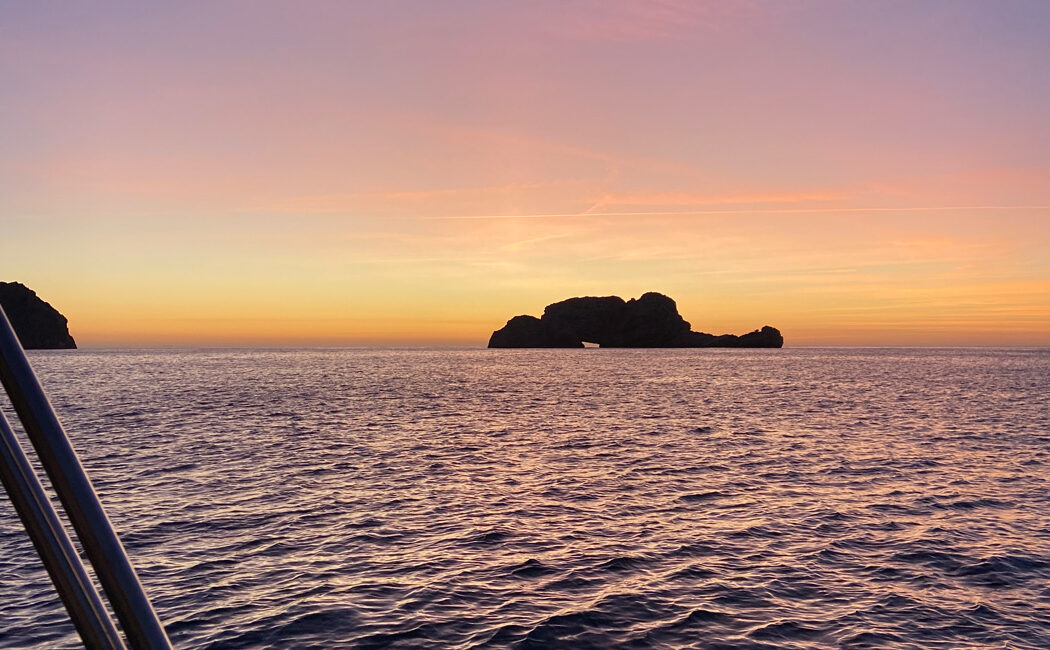
Portinatx
Like Benirrás, this north coast spot was still not open for the season, so we couldn’t get our diving bottles filled, and shopping for groceries was very limited. We did find one open restaurant: Can Amúri, where the owner told us that in season he would consider making pizza deliveries to moored boats. Now that would be a treat! The bay was beautiful though, and we spent three nights there, enjoying the crystal clear water and the calm surroundings.
Ibiza city
Eivissa (as it is locally spelled) itself was an unexpected good experience. Still off-season, we had the old town almost to ourselves. The narrow streets and the views from the top of the hill where the old castle is, are stunning. Locals still live in the neighborhood, although some buildings have been taken over by rich foreigners (most of the time not present) or turned into luxury boutique hotels. You can get a cheap lunch at the monastery there; the nuns offer a daily special. There are also lots of good restaurants and bars to seek out in the rest of the city, and you can easily reach Eivissa by bus from almost anywhere on the island.
MALLORCA
Santa Ponça
This was where we first dropped the hook when we came to Mallorca. We’ve been coming back to this place several times, not because of its beauty (it’s not beautiful, really), but because it’s almost always sheltered and there is lots of room in the bay for anchored yachts. In the town, we recommend the rooftop taco spot right next to the big roundabout, the hidden El Chiringuito (beach bar) close to the Playa Cala Blanca and the modern Lowther Beer bar. Everything else more or less caters to tourists missing home and is basically not worth writing about. But as a sailor, it is very practical to have a spot like Cala Santa Ponça that you know and where you are almost always able to find shelter.
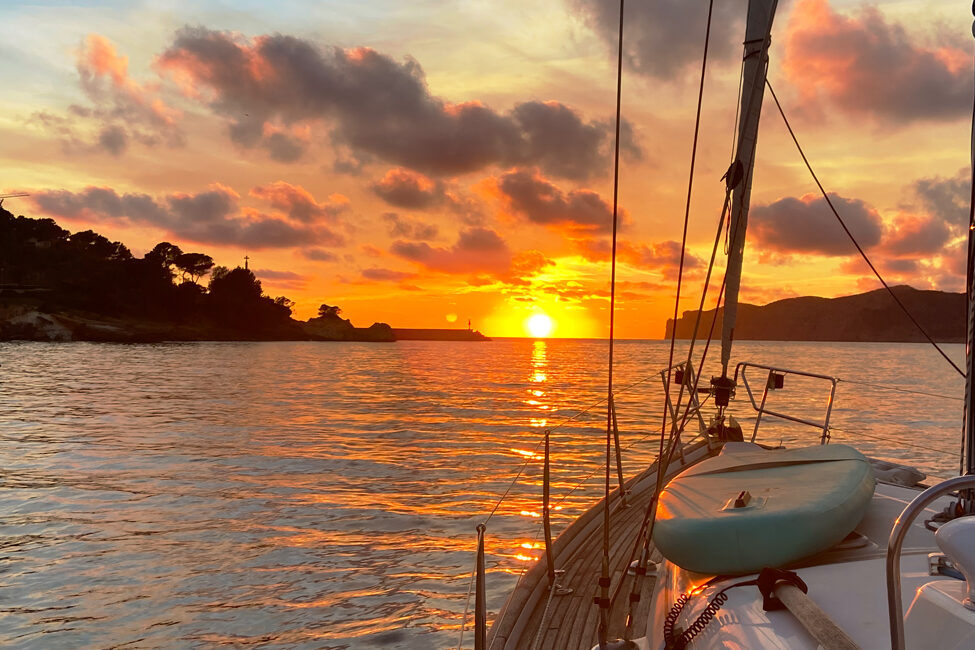
Sa Foradada
If you’re into secluded coves and raw nature, you’ll love this spot as much as we did. Sa Foradada is a small bay tucked in behind a huge cliff on the north coast of Mallorca. The water is crystal clear, and around the cliff is also one of the best snorkeling and diving sites on Mallorca. If the wind is not blowing onto the coast, we recommend that you put on your gear to explore the underwater parts of the cliff with the photogenic hole in! (see the top photo) Oh, and there’s a small restaurant at the top of the cliff.
Sant Elm
Sant Elm – or San Telmo – is a nice little town on the Mallorcan west coast, directly across from the nature reserve Dragonera Island. The dive club was unfortunately not yet open for the season, but should you get a chance to dive the Dragonera Island, go for it – it is supposed to be magical. If diving isn’t your thing, bring some croissants from the local croissanteria and take the hike up to La Trapa, an old monastery. The route starts from the town’s main plaza, it’s well-signed, and it serves up a mix of interesting paths and amazing views of the Dragonera Island.
PORTALS VELLS
This beauty of an anchorage is probably quite full in the high season. But there’s a reason for it! The water is azure blue, the two beaches are small and sheltered, and the rock formations between them are just stunning. You would almost think that you were walking on Mars. People use the rocks for sunbathing, picnicking and to jump into the water from. In the south corner of the bay, there are some enormous old caves that you can actually walk into. On each of the small beaches, there is a little chiringuito.
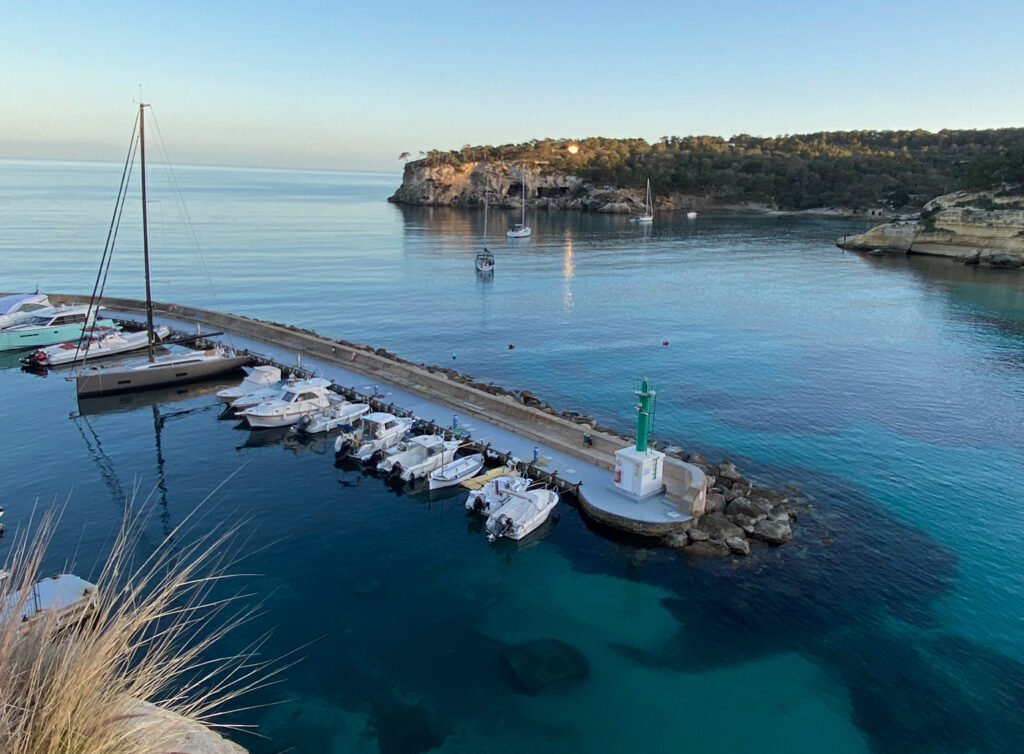
Palma city
The main city of the Balearics, Palma has it all. Narrow old streets, modern art, a massive harbour front, interesting buildings, local markets and a plethora of restaurants and bars to dive into. While tourism has had its impact on some of the main streets and plazas, there is lots of local charm to be found around the mercados Olivar and Catalina, and in the side calles. Our main business in Palma took place around the harbour, but we easily could have spent more time roaming Palma.
Cabrera and Menorca
Cabrera Island
Just south of Mallorca, you’ll find the lesser known of the Balearic islands: The small nature reserve of Cabrera Island. It is only possible to go there by boat, and if you don’t have your own boat, there are day trips from Palma every day in the season. We booked a buoy in the bay, as you’re not allowed to anchor. Only 300 people are allowed on the island per day, because human impact on the nature – as well as the marine life – is restricted as much as possible. The island is beautiful, and the water was completely flat when we were there. We recommend the guided walks – rangers take groups around for free, you just need to sign up – and a bottle of red wine at the local (and only) bar.
Binibèquer / Binibeca
At the time of writing, we’re still on Menorca, so there might be a few spots that we will need to add later. But this beautyful location on the south coast of Menorca should definitely be on the list. Having read about Binibèquer that it is one of the most photographed towns on Menorca because of the houses all being white, but also that it is an architectural decision from the 1960’s and 70’s to build all of these houses in the style of whitewashed, old fishermen’s houses, we didn’t really know what to expect. However, “the white town” is indeed beautiful and quirky with its narrow, winding alleys between houses. We were anchored between rocky cliffs in front of Binibeca Nou. A little to the west of this spot, the Binibeca area Cala Torret welcomed us with a more local atmosphere centered around the small restaurant Cocoon Food and Fun – an absolute gem!
There you go. We hope that we’ve inspired you to go explore some of our favourite spots in the south of Spain and the Balearics. Do post a comment if you go, and let us know what you think!

No Comments